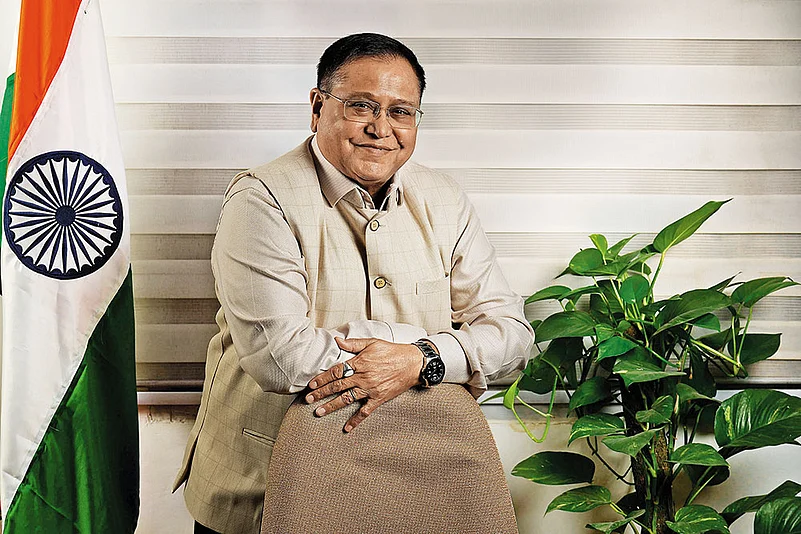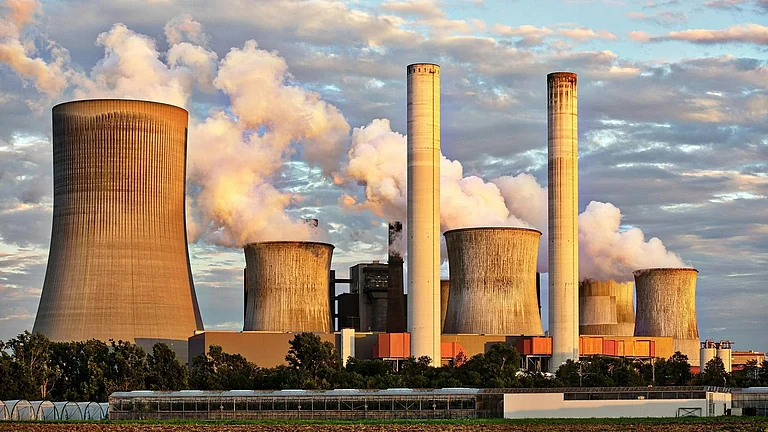How is NITI Aayog positioning small modular reactors (SMRs) within India’s energy-transition strategy?
We all know that renewable energy, whether it’s wind or solar, has its own challenges—variability in supply depending on weather, time of day and other factors. For uninterrupted and reliable power supply, it’s essential to have a non-thermal source of energy, and nuclear energy offers a good mix.
In this context, SMRs are an emerging technology with distinct advantages. First, they require far less space. Second, they are flexible in design. Third, they are compact and can be manufactured in factories in a manner similar to automobiles. They do not require long construction or commissioning periods. and can be deployed wherever needed.
SMRs are a preferred solution for meeting power demands, especially where captive power plants are required such as in cement and steel plants, or refineries, where thermal captive power is currently used.
What timeline does NITI Aayog envision for policy rollout and project execution to meet our 2047 targets?
At present, if we look at the rate at which nuclear power plants are being set up, it’s not very satisfactory. That said, over the past decade, we’ve seen a significant increase in the rate of establishing new power plants. Today, we have about 24 nuclear-power plants operational across the country, generating roughly 8–8.8GW of nuclear power.
However, to reach the ambitious goal of 100GW, involvement of the private sector is essential.
What reforms are being considered in licensing, safety regulations and civil-liability frameworks?
The current Atomic Energy Act does not allow private sector participation. It’s structured entirely for the government, by the government. So, if we want to open this up, the entire Atomic Energy Act would need to be amended.
The first change would be to explicitly permit private sector involvement. The second major issue is safety, reliability and security. Nuclear energy is a dual-use technology. Therefore, any amendment must ensure that while private companies are allowed to design, develop, manufacture and own the plants; all matters related to safety, security and design integrity remain under government oversight.
"SMRs are a preferred solution for meeting power demands, especially where captive power plants are required"
Given the high upfront capital costs associated with SMRs, which financing mechanisms do you see as viable?
In the current scenario, we find that some agencies already using captive power for their operations are willing to invest in setting up SMRs.
Clearly, these users are prepared to make significant investments. Beyond that a large number of financial institutions are expected to play a major role in financing these projects. Whatever financing mechanisms are valid for the current energy sector will likely be applicable to the nuclear sector as well.
How do you see SMRs complementing renewable energy?
SMRs are completely carbon neutral. In fact, if you compare the carbon emissions of SMRs with photovoltaic or solar energy, it’s quite revealing. SMRs rank second in low carbon emissions, generating only about 12g of carbon dioxide per unit of electricity. In comparison, solar power produces around 38g of carbon dioxide per unit of electricity. So, you can clearly see the advantage.
NTPC is exploring coal-to-nuclear conversion at retiring thermal sites. How viable is this model?
There are a large number of thermal power plants that are over 25 years old. Many of these plants occupy vast tracts of land. A significant portion of this land could be freed up and utilised to set up SMRs.
Another advantage is that SMRs consist of two main components—the primary core and the secondary equipment, which includes turbines, boilers and heat exchangers. Many of the secondary systems from old thermal plants can be reused.
Do SMRs have a role in non-power applications?
We always emphasise that nuclear power, and SMRs in particular, have multiple applications beyond electricity generation. Their versatility allows them to be used in industrial heat processes, hydrogen production, desalination and other sectors.
For such use cases to take off, policy support will be critical. This includes regulatory frameworks that facilitate investment, incentives for integrating SMRs into industrial processes and clear guidelines to encourage adoption.
SMRs can also produce heat, which is crucial for various industrial applications. They can meet industrial heat requirements efficiently, promote hydrogen production and desalination.
How do you balance the push for indigenising SMR technology with the need to leverage global designs, fuel supply chains and regulatory frameworks?
When it comes to technology access, we are keeping the doors open for any international partner. The goal is to facilitate joint ventures.
The only condition will be that the Indian company must hold a majority stake. That’s the key requirement.
We are also ensuring that global partnerships are welcomed, while also stipulating that all designs will be made and approved by the government. This provides the necessary freedom for manufacturers to innovate and develop solutions while maintaining regulatory oversight.












